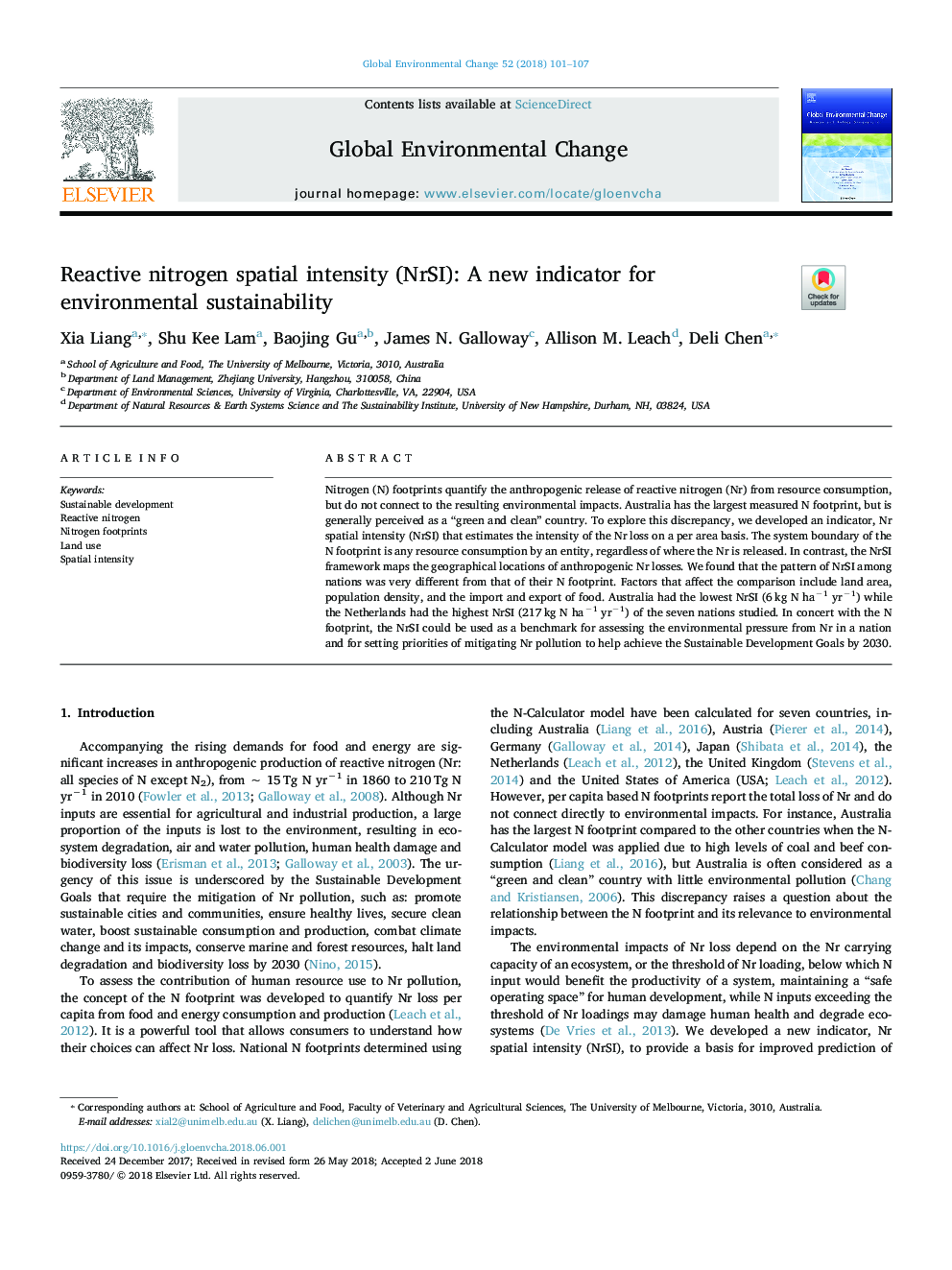| کد مقاله | کد نشریه | سال انتشار | مقاله انگلیسی | نسخه تمام متن |
|---|---|---|---|---|
| 7468677 | 1485106 | 2018 | 7 صفحه PDF | دانلود رایگان |
عنوان انگلیسی مقاله ISI
Reactive nitrogen spatial intensity (NrSI): A new indicator for environmental sustainability
دانلود مقاله + سفارش ترجمه
دانلود مقاله ISI انگلیسی
رایگان برای ایرانیان
کلمات کلیدی
موضوعات مرتبط
علوم زیستی و بیوفناوری
علوم محیط زیست
علوم زیست محیطی (عمومی)
پیش نمایش صفحه اول مقاله

چکیده انگلیسی
Nitrogen (N) footprints quantify the anthropogenic release of reactive nitrogen (Nr) from resource consumption, but do not connect to the resulting environmental impacts. Australia has the largest measured N footprint, but is generally perceived as a “green and clean” country. To explore this discrepancy, we developed an indicator, Nr spatial intensity (NrSI) that estimates the intensity of the Nr loss on a per area basis. The system boundary of the N footprint is any resource consumption by an entity, regardless of where the Nr is released. In contrast, the NrSI framework maps the geographical locations of anthropogenic Nr losses. We found that the pattern of NrSI among nations was very different from that of their N footprint. Factors that affect the comparison include land area, population density, and the import and export of food. Australia had the lowest NrSI (6â¯kg N haâ1 yrâ1) while the Netherlands had the highest NrSI (217â¯kg N haâ1 yrâ1) of the seven nations studied. In concert with the N footprint, the NrSI could be used as a benchmark for assessing the environmental pressure from Nr in a nation and for setting priorities of mitigating Nr pollution to help achieve the Sustainable Development Goals by 2030.
ناشر
Database: Elsevier - ScienceDirect (ساینس دایرکت)
Journal: Global Environmental Change - Volume 52, September 2018, Pages 101-107
Journal: Global Environmental Change - Volume 52, September 2018, Pages 101-107
نویسندگان
Xia Liang, Shu Kee Lam, Baojing Gu, James N. Galloway, Allison M. Leach, Deli Chen,